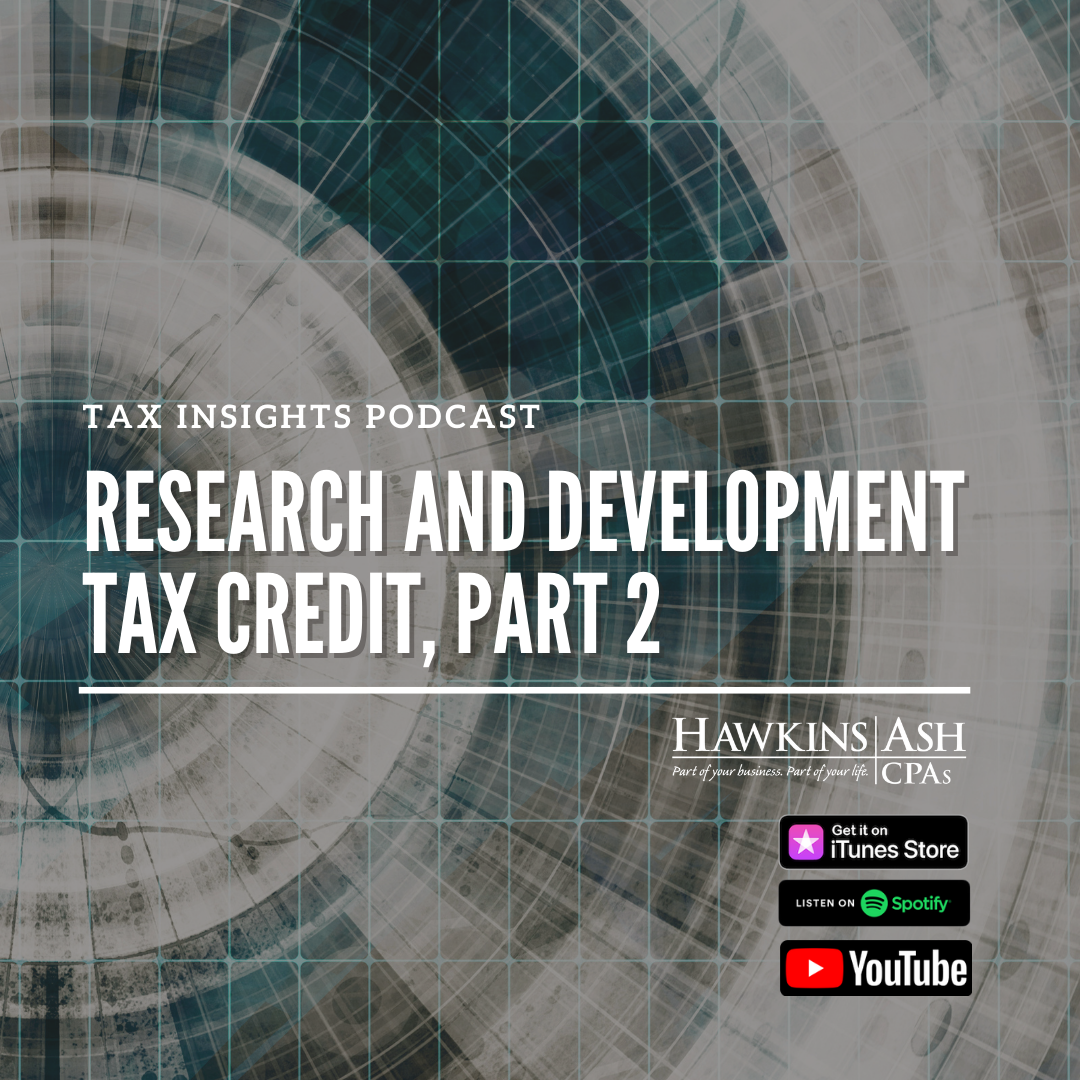Previously we talked about the benefits of the Research and Development tax credit, how it is one of the most substantial incentives under U.S. tax law, and that many different types of businesses will qualify to be able to take the credit.
In this episode, we’ll go more in-depth about some different aspects of the Research and Development tax credit including what is considered research by the IRS. I’m joined by Charles Wendlandt from Hawkins Ash CPAs.
Does Your Company Qualify For the R&D Tax Credit?
Take the R&D Survey
Can You Remind Me Again, What Is Research?
- Absolutely. When the word research is brought up, most people immediately think of people wearing white lab coats with beakers and petri dishes
- The IRS has a different way of thinking about what research is, which boils down to creating or producing something that is new to the taxpayer.
There Must Be Some Catch Here, or Everyone Would Be Claiming Things Are New to Them.
- You are correct on that. It is why the IRS came up with a 4-part test that needs to be passed in order for the research to be considered qualified for the credit.
What Are the Four Parts to This Test?
- The four parts are the research needs to be for a permitted purpose, there has to be a process of experimentation, there needs to be an elimination of uncertainty, and the research needs to be technical in nature.
Sounds Easy Enough, but Maybe You Should Expand a Bit on Each of Those Areas.
- I would love to, and I will touch on each one individually.
- Let us start with the research needs to be for a permitted purpose, this means that the taxpayer must intend to apply the information being discovered to develop a new or improved business component, eliminate supply costs or eliminate labor costs.
- A business component is any product, process, computer software, technique, formula, or invention, which is to be held for sale, lease, or used in a trade or business of the taxpayer.
- An example of this might be a door manufacturer who makes fire resistant doors. Their current doors are good at holding back a fire for 15 minutes, but they think if they change the mix of materials in the door, they could hold back the fire for 20 minutes.
- Next, the research needs to have a process of experimentation. That is process designed to evaluate one or more alternatives to achieve a result where the capability or method of achieving that result, or the appropriate design of that result is uncertain as of the beginning of the taxpayer’s research activities.
- Really, what you are looking for here is something along the lines of prototypes, models, or trial and error that look at different designs, processes, or materials.
- The third test that needs to be passed is there has to be an elimination of uncertainty.
- This boils down having a chance of failure on the outset, discovering information to eliminate it, and trying out alternative solutions.
- Most often, we see this as, we know we can do it, but we just do not know how to exactly get it done.
- The final test is the activity needs to be technical in nature.
- This means discovering information that fundamentally relies on the principals of hard sciences such as physical, biological, computer science, and rules out soft sciences like marketing, accounting, and business administrative activities.
Are There Any Other Exclusions Other Than Soft Sciences?
-
- Yes. There are some specific exclusions that the associated expenses cannot be used to claim the credit.
- These include any research that is done outside of the USA, funded research, and an adaptation of an existing business component
- Funded research is the research where the taxpayer does not retain the rights to the results of the research or someone else is contractually obligated to pay for the research even if the activities fail to produce the desired result.
- Adaptation of an existing business product means that you cannot just take something, shrink it three inches, and call it research if it does not change the product at all.
- However, if you shrink the same object three inches, and it changes the structural integrity of the object, that could qualify.
Next week we will talk about how to quantify qualified research and the calculation of the credit. Be sure to talk to a tax professional if you have any questions about the Research and Development Tax Credit or would like further assistance.





